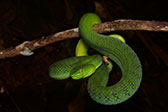
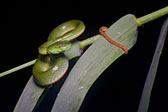
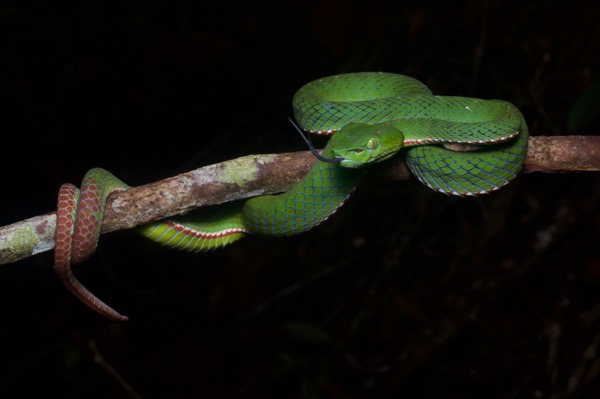
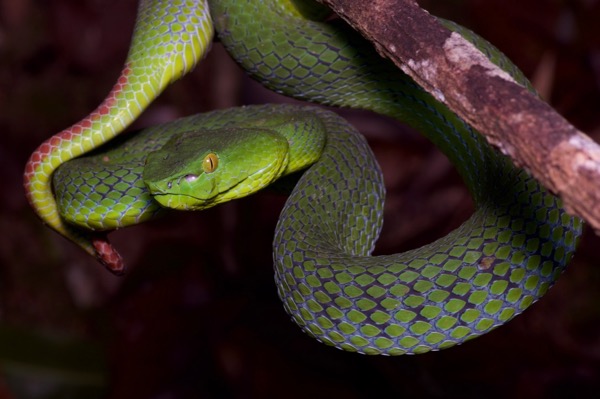
The red-and-white stripes separating the sides from the bottom visible in the first snake seem to generally be considered conclusive evidence for T. sabahi fucatus, and perhaps evidence that it's a male (though maybe females have these stripes in some populations, according to some authorities).
The sharp delineation between the reddish top-of-tail and green bottom-of-tail in the second snake are often cited as evidence in favor of T. nebularis. But it seems quite surprising that the two nearly-identical species would be found within ten feet of the other (you'd expect selection pressures to have favored one or the other). And also, the second snake's eyes are definitely more yellow than green, which seems to rule out T. nebularis. So I'm just going to call them both T. sabahi fucatus.
My Travelogues and Trip Lists page includes a complete list of the herps I saw in the wild on this trip to Malaysia, as well as a travelogue of the trip.
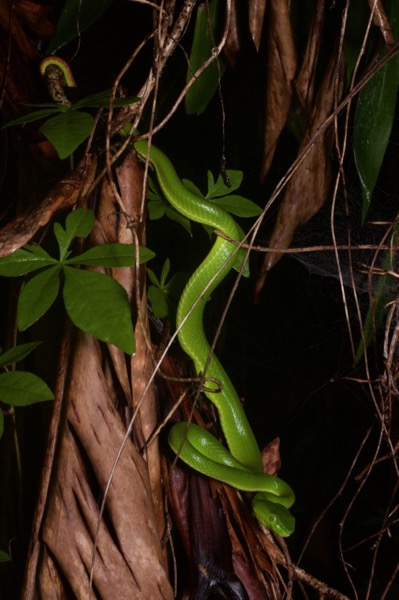
But also, some references claim that T. sabahi fucatus has more of a matte finish when photographed with a flash, whereas T. nebularis has more of a glossy finish. This snake looks pretty glossy to me (based on the extra-shiny flash highlights). On the other hand, it was a very wet night so maybe the snake is extra reflective just because it's wet. I'm soooo confused!

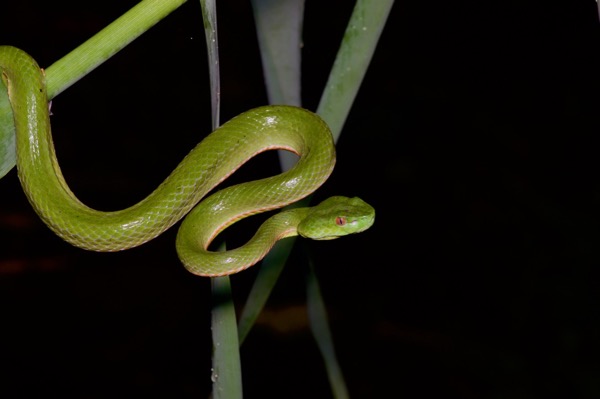
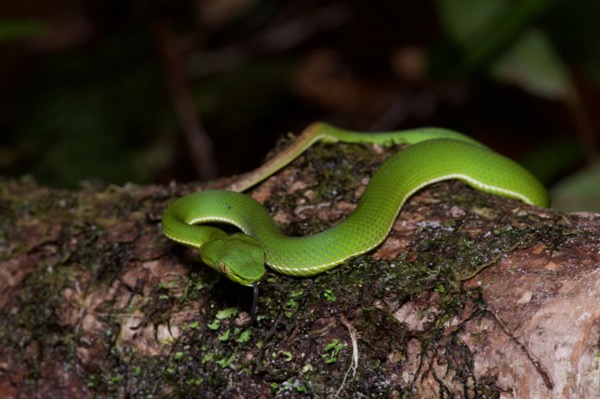
- Trimeresurus sabahi account on The Reptile Database
- Das, I. 2010. A Field Guide to the Reptiles of South-east Asia
- Malkmus, R., Manthey, U. Vogel, G., Hoffmann, P., & Kosuch, J. 2002. Amphibians & Reptiles of Mount Kinabalu (North Borneo)
- Stuebing, R. B., Inger, R. F., Lardner, B. 2014. A Field Guide to the Snakes of Borneo, Second Edition